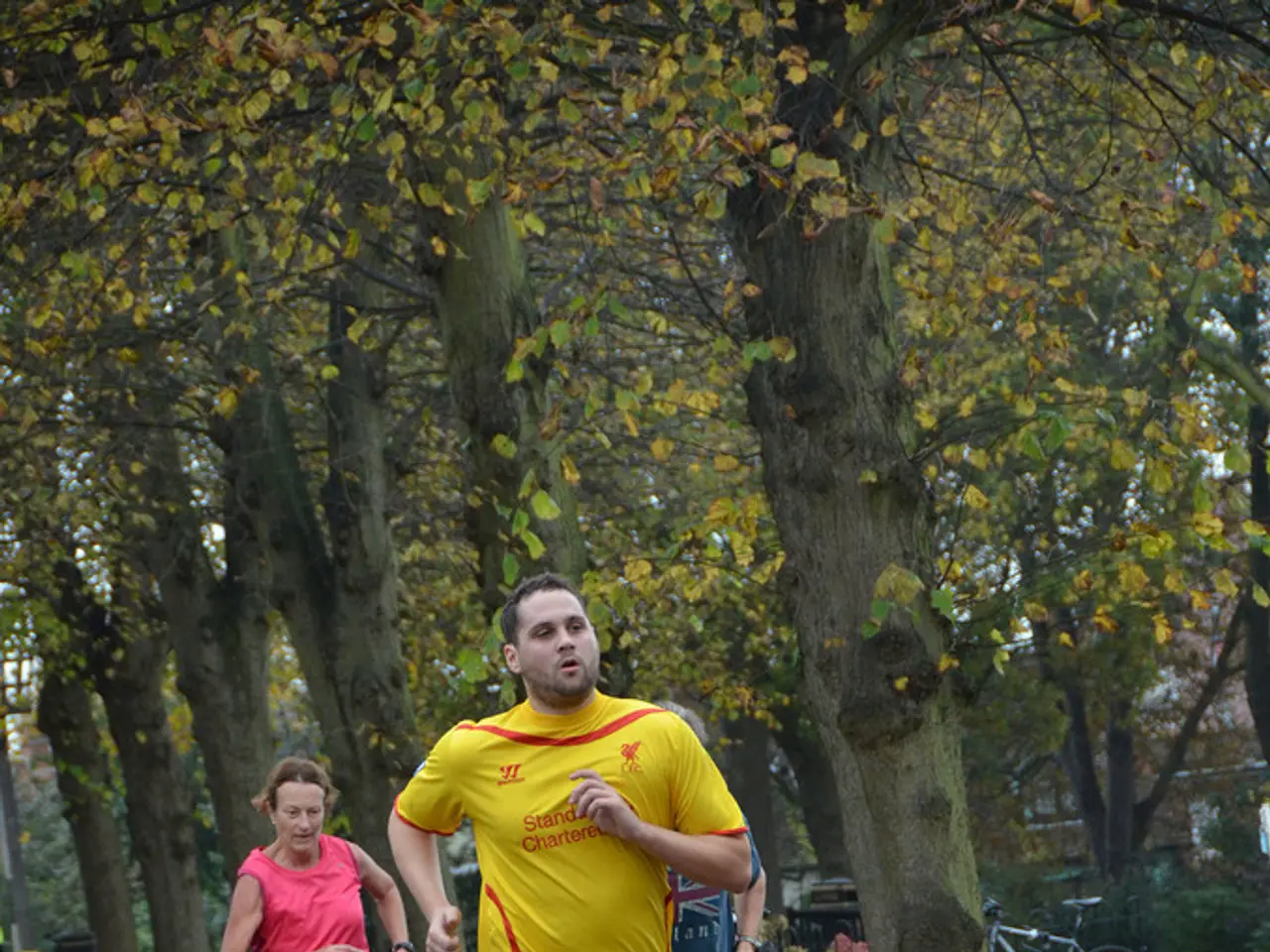"Exploring the참 crow-length of 3K: Discussing Its Measurement and Importance"
Running a 3K: A Balanced Approach to Fitness and Speed
A 3K (3 kilometers) run is an ideal distance for those seeking to improve their fitness levels, develop speed, and challenge themselves without committing to longer races like half-marathons or marathons.
The Role of 3K in Training and Performance
In the world of running, the 3K distance offers a unique balance between speed and endurance. It is shorter than the standard 5K race, making it a faster, more intense effort often used in training to enhance speed endurance and anaerobic capacity [1][3]. Runners use 3K pace workouts to improve their finishing kick or speed in longer races, while fitness trainers recommend regular 3K runs for weight loss and general conditioning [1][3].
Training programs incorporate 3K-paced efforts to connect aerobic endurance with race-specific speed [2][3]. Unlike very short sprints (like 80-400m intervals), the 3K requires sustained speed over about 8-12 minutes for many runners, blending aerobic and anaerobic systems [2][3].
Health Benefits of Regular 3K Runs
Regularly running or walking a 3K can offer a wide range of health benefits, including improved cardiovascular health, weight management, and mental health improvements [4][5]. Maintaining a positive mindset, staying focused, and managing pre-race anxiety can significantly impact performance in a 3K run [5].
Preparing for a 3K Run
Proper training is essential for running a 3K. This includes a well-structured training plan, rest and recovery, good nutrition and hydration, and gradually increasing your running distance and frequency [6]. More experienced runners may incorporate interval training and tempo runs into their training regimen [6].
Tracking Your Progress
Timing yourself running or walking 3K regularly can serve as a fitness benchmark. You can use a stopwatch, running app, fitness tracker, or smartwatch to measure your performance [7].
Safety Considerations
When running or walking a 3K, safety considerations include warming up before starting, wearing appropriate footwear and clothing, choosing a safe route, staying hydrated, and paying attention to your body [8].
3K in Everyday Life
In rural areas, 3K might represent the distance between farms, villages, or natural features such as lakes or forests. In urban environments, 3K can represent the distance between neighborhoods, landmarks, or public transportation hubs [9]. It is also approximately 1.86 miles in the imperial system [9].
Setting Realistic Goals
Setting realistic goals is key to staying motivated and confident. Breaking down the 3K into smaller, more manageable segments can help prevent feeling overwhelmed [10].
[1] https://www.runnersworld.com/training/a20835913/3k-run-training-plan/ [2] https://www.active.com/running/articles/3k-run-training-tips [3] https://www.runnersworld.com/news/a20829088/why-you-should-run-3k-races/ [4] https://www.mayoclinic.org/healthy-lifestyle/fitness/in-depth/running/art-20046436 [5] https://www.psychologytoday.com/us/blog/the-athletes-way/201803/the-psychology-running-and-winning [6] https://www.active.com/running/articles/3k-run-training-tips [7] https://www.runnersworld.com/training/a20829088/why-you-should-run-3k-races/ [8] https://www.runnersworld.com/health/a20829089/3k-run-safety-tips/ [9] https://www.metric-conversions.org/length/kilometers-to-miles.htm [10] https://www.active.com/running/articles/3k-run-training-tips
- Incorporating 3K-paced efforts into a training plan can help athletes bridge the gap between aerobic endurance and race-specific speed in a manageable yet challenging distance.
- Regular 3K runs not only contribute to improved fitness and weight management, but also promote mental well-being, enhancing focus and reducing pre-race anxiety.




